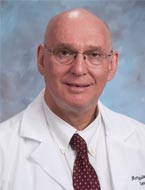Poststroke depression: a review emphasizing the role of prophylactic treatment and synergy with treatment for motor recovery Journal Article
Local Library Link: Find It @ Loyola
| Authors: | Flaster, M.; Sharma, A; Rao, M |
| Article Title: | Poststroke depression: a review emphasizing the role of prophylactic treatment and synergy with treatment for motor recovery |
| Abstract: | Neuropsychiatric manifestations are common post stroke. Depression has a prevalence rate of 9% to 34% in the initial 3 to 6 months following stroke and is the most common neuropsychiatric sequel of stroke. Poststroke depression (PSD) has a significant adverse impact on the course of rehabilitation following stroke, resulting in overall impaired functional outcome. An increased risk of suicide and increased mortality have been reported. The association of depression and stroke is well established, highly complex, and multifactorial in origin, and the etiology of PSD involves size, location and number of lesions, stroke subtype, stroke severity, social handicap, and family support. Additionally, depression itself is an independent risk factor for stroke. In this article, we review the complex pathogenesis of PSD and summarize pharmacological treatment options. Because of recent important results that may relate to underlying cellular restorative processes, we focus on early prophylactic treatment, particularly as it involves selective serotonin uptake inhibitors (SSRIs). There is a recently recognized synergy between functional recovery and depression prophylaxis. New evidence that antidepressants, and SSRIs in particular, can make a substantial contribution to stroke recovery is explored. |
| Journal Title: | Topics in stroke rehabilitation |
| Volume: | 20 |
| Issue: | 2 |
| ISSN: | 1074-9357; 1074-9357 |
| Publisher: | Unknown |
| Journal Place: | United States |
| Date Published: | 2013 |
| Start Page: | 139 |
| End Page: | 150 |
| Language: | eng |
| DOI/URL: | |
| Notes: | ID: 12907; JID: 9439750; ppublish |



